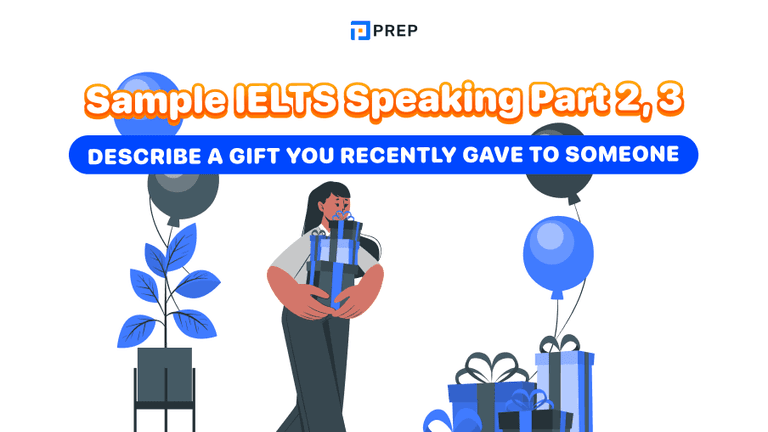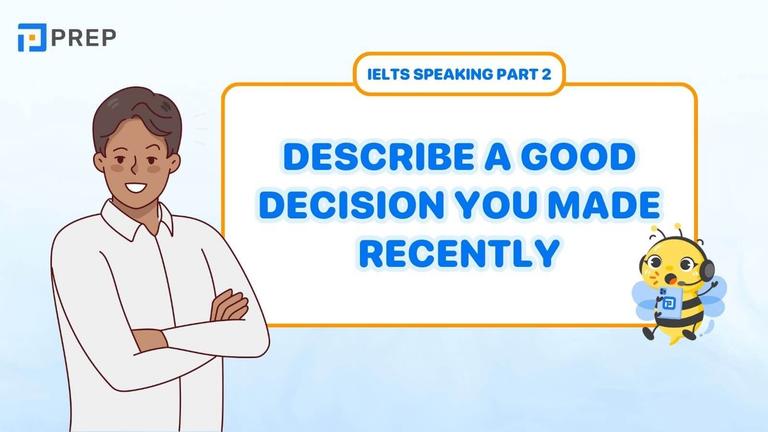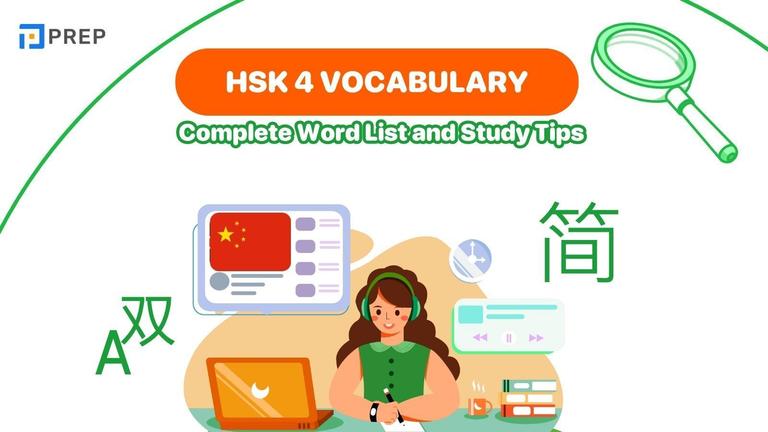How to Say No Problem in English – Meaning and Examples
How to Say No Problem in English is a key skill for learners who want to sound natural in different contexts. This guide explains the meaning, shows casual and formal alternatives, and gives sample dialogues for daily conversations, customer service, and IELTS speaking practice.

I. What Does 'No Problem' Mean in English?
The phrase "no problem" is one of the most common informal responses in English. It is typically used in everyday conversations and has two main functions:
- To respond to someone’s thanks, similar to “you’re welcome.”
- To show willingness to accept a request or offer help, similar to “sure” or “I can do that.”
- In most cases, "no problem" is another way of showing politeness or kindness. It implies that whatever was done did not cause inconvenience.
Examples:
- A: “Thanks for helping me carry these books.”
B: “No problem!” - A: “Would you mind sending me the report later?”
B: “No problem, I’ll send it this afternoon.”
Although "no problem" is widely accepted and commonly used, it may not always be appropriate in formal or professional settings, especially when responding to “thank you.”
Some listeners—particularly in formal environments—might interpret “no problem” as too casual, or even slightly dismissive, as if the task could have been a problem but wasn’t. In such cases, consider neutral options and review say thank you for polite responses.

1. How to Say No Problem in English Naturally
While "no problem" is widely understood and used in casual conversation, native English speakers often vary their responses depending on the situation, the relationship, and the level of formality required.
Here are common, natural alternatives to “no problem” — grouped by context and tone — so you can sound more fluent, polite, and confident in English.
Informal and Casual Alternatives
These expressions are appropriate for friendly or relaxed conversations.
|
Alternative |
When to Use |
Example |
|
No worries |
Everyday chats, casual replies |
“Thanks!” → “No worries!” |
|
You got it |
Friendly promises or quick confirmation |
“Can you send that file?” → “You got it.” |
|
Sure thing |
Informal, cooperative tone |
“Would you mind helping me?” → “Sure thing!” |
|
Anytime |
When someone thanks you sincerely |
“Thanks for staying late!” → “Anytime.” |
|
Don’t mention it |
Slightly old-fashioned, still casual |
“Thanks again for your help.” → “Don’t mention it.” |
Formal and Polite Alternatives
Use these phrases in professional correspondence, customer service, or respectful exchanges.
|
Alternative |
When to Use |
Example |
|
You’re welcome |
Safe, neutral, always appropriate |
“Thank you for your time.” → “You’re welcome.” |
|
My pleasure |
Polite, sincere, and professional |
“Thanks for your assistance.” → “My pleasure.” |
|
Glad to help |
Friendly yet respectful |
“Thank you for explaining that.” → “Glad to help.” |
|
It was nothing |
Polite way to downplay effort |
“Thanks, you really saved me.” → “It was nothing.” |
|
Not at all |
Formal; polite denial of inconvenience |
“Thank you so much.” → “Not at all.” |
Neutral Options for Business or Writing
These are especially useful in professional emails, presentations, or when working with clients or colleagues you don’t know well.
|
Alternative |
When to Use |
Example |
|
Certainly |
Polite and confident |
“May I ask a quick question?” → “Certainly.” |
|
Of course |
Friendly business tone |
“Would it be okay to reschedule?” → “Of course.” |
|
Absolutely |
Confident and upbeat |
“Would you be willing to help?” → “Absolutely.” |
|
I’m happy to help |
Ideal for customer service or teamwork |
“Thanks for clarifying that.” → “I’m happy to help.” |
|
Please don’t hesitate to ask |
Used in emails or formal closing |
“Let us know if you need anything else.” → “Please don’t hesitate to ask.” |
By learning these variations, you can respond more naturally in any situation—whether you’re replying to a quick “thank you” from a friend or writing a professional email to a client.

2. Expressions You Can Use Instead of 'No Problem' by Context
Choosing the right way to say “no problem” depends not only on the meaning you want to convey, but also on the context in which you are speaking or writing. Below are natural expressions organized by common real-life situations.
After “Thank You” in Everyday Conversations
In friendly, informal settings—such as chatting with classmates, neighbors, or friends—these responses sound warm and relaxed:
|
Expression |
Example Use |
|
No worries |
“Thanks for the ride.” → “No worries!” |
|
Anytime |
“Thanks for helping me move!” → “Anytime.” |
|
Sure |
“Thanks for calling me back.” → “Sure!” |
|
No problem at all |
“I really appreciate it!” → “No problem at all.” |
|
Don’t mention it |
“Thanks again.” → “Don’t mention it.” |
These are particularly common in spoken English among peers - wrap up politely with ways to say goodbye.
In Customer Service or Professional Settings
In work contexts, especially when dealing with clients, managers, or in service roles, it’s better to choose language that sounds polite, respectful, and professional:
|
Expression |
Example Use |
|
You’re welcome |
“Thank you for your feedback.” → “You’re welcome.” |
|
My pleasure |
“Thanks for your assistance.” → “My pleasure.” |
|
I’m happy to help |
“Appreciate the support.” → “I’m happy to help.” |
|
Not at all |
“Thanks again.” → “Not at all.” |
|
Certainly |
“Thank you for considering us.” → “Certainly.” |
These expressions maintain a tone of service, while avoiding phrases that may sound overly casual or dismissive —see models in english conversation.
In Emails and Formal Writing
In email communication (especially in business, university, or official correspondence), you’ll want to avoid “no problem” and instead opt for more neutral or formal phrasing.
|
Expression |
Example Use in Email |
|
You’re most welcome |
“Thank you for your quick assistance.” → “You’re most welcome.” |
|
I’m happy to assist |
“We appreciate your help.” → “I’m happy to assist where needed.” |
|
It was a pleasure helping you |
“Thank you for resolving this.” → “It was a pleasure helping you.” |
|
Please don’t hesitate to ask |
Used at the end of an email to offer further assistance |
|
Let me know if you need anything else |
A polite way to keep the conversation open |
These phrases are safer and sound more professional in written English — build routine with English-speaking practice websites.

II. Sample Dialogues Using Different Alternatives
To understand how to replace the phrase “no problem” naturally, it’s helpful to see it used in real conversations. Below are three dialogue samples that demonstrate alternative expressions in different settings:
Informal Conversation Between Friends
- Emma: Thanks a lot for picking me up. The train was delayed again.
- Liam: No worries! It was on my way anyway.
- Emma: Still, I really appreciate it.
- Liam: Anytime. That’s what friends are for.
In this dialogue, casual alternatives like “no worries” and “anytime” fit perfectly in a relaxed, friendly context.
Professional Business Email Example
Subject: Thank you for your support
Hi Ms. Taylor,
Thank you very much for your quick response and clear documentation. It made a big difference during the presentation.
Best regards,
Mark
Reply:
Dear Mark,
You’re most welcome — I’m happy to assist.
Please don’t hesitate to reach out if you need any further support.
Kind regards,
Emily Taylor
Here, expressions like “you’re most welcome” and “happy to assist” sound professional, sincere, and appropriate for business communication.
IELTS Speaking Sample Response (Part 1)
- Examiner: Do you often help your friends or classmates with assignments?
- Candidate: Yes, quite often. Just last week, I helped a classmate with her presentation.
- Examiner: How do you usually respond when someone thanks you for helping?
- Candidate: I normally say something like “no worries” or “glad to help.” I guess it just comes naturally.
In an IELTS Speaking test, candidates should aim to sound both natural and polite. Phrases like “no worries” and “glad to help” show flexibility in vocabulary without sounding rehearsed.
III. Crack the IELTS Exam With Confidence
PREP hopes that through this article, PREP has provided you with some of the best ways to say No Problem in English. If you’re ready to boost your IELTS band score, check out our expert-led courses:
-
IELTS course: Unlock Your IELTS Success Story.

Hi I'm Chloe, and I am currently serving as an Product Content Administrator at Prep Education. With over five years of experience in independent online IELTS study and exam preparation, I am confident in my ability to support learners in achieving their highest possible scores.
Comment
Premium content
View allPersonalized roadmap
Most read












